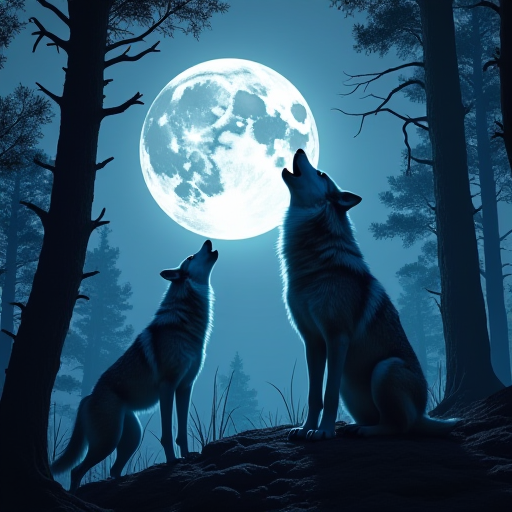
Why Do Wolves Howl?
Wolves are one of nature's most intriguing creatures, known for their complex social structures and behaviors. Among the many fascinating aspects of wolf behavior is their iconic howling. This eerie yet captivating sound has intrigued humans for centuries, spawning countless myths and legends. However, the reasons behind why wolves howl are grounded in biology and social dynamics. In this article, we explore the various reasons why wolves howl, shedding light on this enigmatic behavior.
1. Communication
a. Long-Distance Communication
Wolves inhabit vast territories that can range from 50 to over 1,000 square miles. Howling serves as an effective long-distance communication tool, allowing wolves to convey messages across these extensive areas. Unlike other forms of vocalization, a howl can travel several miles, helping wolves maintain contact with pack members and coordinate movements.
b. Pack Cohesion
Wolves are highly social animals that rely on strong pack dynamics for survival. Howling helps maintain the cohesion of the pack by allowing members to locate each other, especially when they are spread out while hunting or patrolling their territory. A group howl often serves to reinforce social bonds and signal unity within the pack.
2. Territorial Defense
Wolves are territorial animals that defend their domains against intruders. Howling acts as a vocal marker, alerting neighboring packs to the presence of a resident group. This acoustic boundary establishment helps minimize physical confrontations, as potential rivals are warned of the presence of a defended territory. The distinctive nature of a pack's howl can also identify its members, further solidifying their territorial claim.
3. Social Structure and Hierarchy
a. Affirmation of Leadership
In a wolf pack, there is a clear hierarchy, with an alpha male and female leading the group. Howling is one way to affirm this leadership. The dominant wolves often initiate group howls, and their voice is usually the most prominent. This vocal assertion of dominance helps maintain the social order within the pack.
b. Role Identification
Howling can also help identify the roles of different pack members. The pitch and duration of a wolf's howl can reflect its age, gender, and rank within the pack hierarchy. This auditory information allows wolves to communicate their status and intentions to other members.
4. Emotional Expression
Wolves, like many animals, have the capacity for emotional expression. Howling can be a way for wolves to express a range of emotions, from excitement and playfulness to stress and distress. For instance, a lone wolf separated from its pack may howl as a sign of loneliness, seeking to re-establish contact with its companions.
5. Hunting Coordination
While wolves primarily rely on non-vocal communication during hunts, howling can play a role in coordinating group movements before and after the hunt. A pre-hunt howl may serve to gather the pack and synchronize their efforts. Post-hunt howling can communicate the success of a hunt or call pack members to share in the spoils.
Conclusion
Wolves howl for a myriad of reasons, each serving a crucial function in their survival and social structure. From communication and territorial defense to the affirmation of social hierarchy and emotional expression, howling is an integral part of wolf behavior. Understanding why wolves howl not only enhances our appreciation of these majestic animals but also contributes to our broader understanding of animal communication and social dynamics. As we continue to study wolves in their natural habitats, the haunting melody of their howls will undoubtedly continue to captivate and inspire us.
